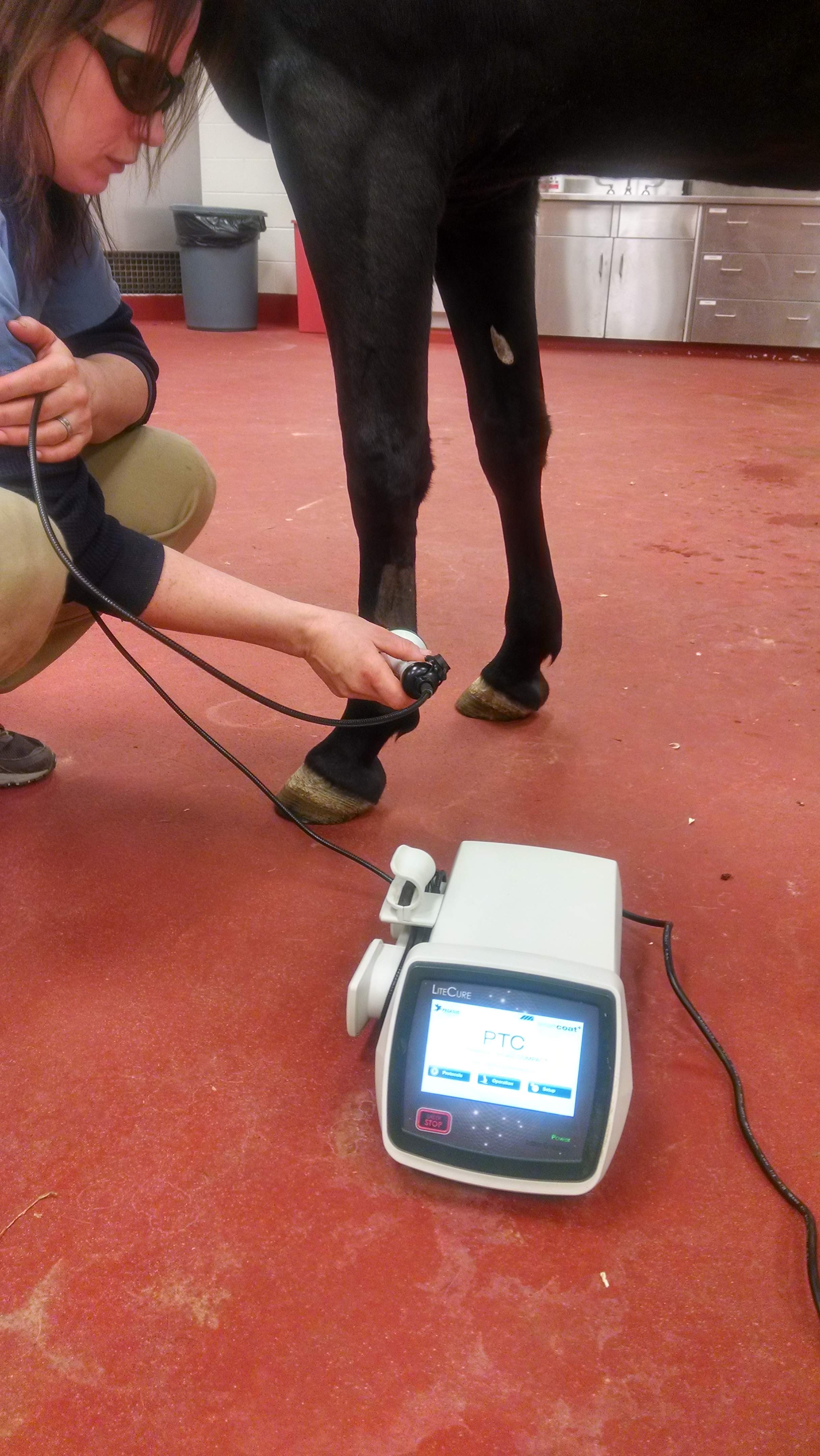Why Equine Therapy is Becoming a Preferred Alternative for Emotional Wellness
Why Equine Therapy is Becoming a Preferred Alternative for Emotional Wellness
Blog Article
Evaluating the Performance of Laser Treatment in Equine Treatment for Injury Rehabilitation
The examination of laser therapy's effectiveness in equine injury rehab pivots on multiple factors, consisting of recovery time, pain mitigation, and tissue regrowth. Veterinarians often observe premium outcomes with laser treatment compared to conventional approaches, placing it as an essential element in equine care.
Understanding Laser Treatment
Laser therapy has actually come to be a pivotal device in veterinary medicine, specifically in the therapy of equine conditions. Known for its non-invasive nature and effectiveness, laser treatment entails the application of certain wavelengths of light to boost tissue repair service and reduce swelling. This therapeutic method is increasingly favored for its capability to increase the healing procedure in steeds struggling with a range of musculoskeletal injuries and chronic conditions.
The main system behind laser treatment is its capability to boost cellular features. Furthermore, laser therapy promotes vasodilation, improving blood circulation and oxygen delivery to damaged tissues, thus expediting recuperation.
In equine medication, laser therapy is especially useful for conditions such as tendonitis, osteoarthritis, and wound healing. The method is admired for its pain-relieving properties, permitting steeds to gain back wheelchair and function more swiftly. Vets also appreciate its minimal side impacts compared to various other treatment methods, making it a reliable and secure choice for equine treatment.

How Laser Therapy Functions

Upon absorption, these photons trigger a series of biochemical modifications, improving mitochondrial function and leading to increased adenosine triphosphate (ATP) production. This increase in ATP accelerates cellular metabolic process, promoting tissue repair and regeneration. Additionally, laser therapy regulates inflammatory responses by influencing cytokine degrees and lowering oxidative stress and anxiety, therefore easing discomfort and swelling.
One more considerable element of laser therapy is its duty in boosting microcirculation. The treatment promotes vasodilation, improving blood circulation and oxygen delivery to broken tissues (Equine Therapy). This facilitates the elimination of mobile particles and sustains the expansion of fibroblasts and collagen synthesis, essential for injury recovery
Scientific Evidence
The effectiveness of laser therapy in equine treatment has actually been substantiated via different medical studies, showcasing great post to read its therapeutic potential across a range of conditions. A research conducted by Turner et al. (2012) demonstrated that horses treated with low-level laser therapy (LLLT) for tendon injuries exhibited sped up recovery contrasted to those receiving standard treatments.
Similarly, research by Johnson and colleagues (2015) focused on equine muscle injuries, exposing that laser therapy significantly accelerated muscle mass fiber regeneration and decreased muscle rigidity. These findings were affirmed by histological evaluations showing enhanced muscle tissue organization. Professional evaluations have shown that laser treatment can alleviate chronic problems such as osteoarthritis. A study by Smith et al. (2018) reported that horses with osteoarthritic joints experienced noteworthy discomfort relief and enhanced series of activity complying with a routine of laser therapy sessions.
Veterinarian Insights

Veterinarians additionally value the flexibility of laser therapy. She points out that laser therapy can be customized to the particular needs of each equine, making sure optimal results.
Moreover, veterinarians value the capability to incorporate laser treatment with other therapy methods. This multimodal technique can boost overall treatment efficiency, supplying a detailed remedy for equine rehabilitation. Such endorsements from experienced professionals highlight the growing approval and application of laser treatment in equine medication.
Practical Considerations
A key facet of implementing laser treatment in equine treatment entails comprehending the useful factors to consider that guarantee its efficacy and safety and security. Most importantly, it is crucial to select the appropriate try this website laser gadget, as different kinds differ in wavelength, power, and penetration deepness. Equine Therapy. Veterinarians have to be fluent in these parameters to tailor treatment methods successfully to every injury kind
Furthermore, the frequency and period of laser therapy sessions need careful preparation to optimize healing benefits while decreasing any type of potential adverse results. Consistent tracking of the equine's feedback to treatment can lead required modifications in the treatment regimen. Establishing a safe and controlled setting during therapies is likewise vital to protect against unexpected exposure to laser emissions, which could harm both the steed and the trainer.
Training and qualification of workers providing laser treatment are critical to make certain appropriate method and to maintain safety and security standards. In addition, maintaining precise documents of each session, consisting of laser setups and observed outcomes, is crucial for reviewing the overall performance of the therapy and for making data-driven choices.
Conclusion
Laser therapy has actually emerged as an effective method in equine injury rehabilitation, offering substantial benefits in recovery time, discomfort relief, and tissue recovery. For ideal results, continuous surveillance and customized treatment protocols remain essential in leveraging the complete more tips here capacity of laser treatment in equine care.
Report this page